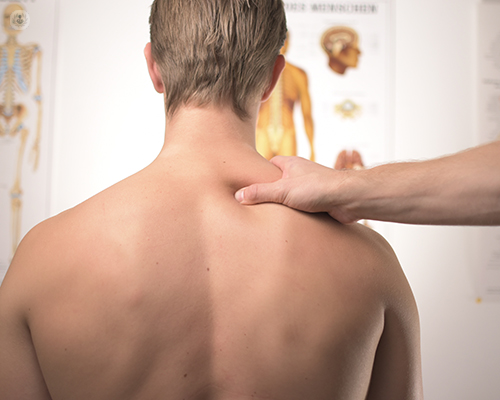Recommended back pain treatments: a complete guide
Autore:If you have chronic back pain, you have probably tried lots of different ways to find pain relief, whether it be stretching, physical exercise, bed rest or painkillers. In addition, you might have researched what other medical treatments are available, but knowing which are safe and medically-approved can be confusing. NICE (National Institute for Health and Care Excellence) has a set of guidelines about the best ways to manage low back pain, which stipulates the safest and most effective methods of management. Here, Dr Giancarlo Camilleri, a pain management expert of the Surrey Orthopaedic Clinic, summarises what NICE recommends.

What is the treatment recommended for back pain?
In 2016, NICE updated its guidelines on how best to manage low back pain. The section below will discuss all the options generally available to help with back pain and will identify which of these treatments have been approved by NICE.
The good news is that surgery is very rarely needed to treat back pain. In fact, over the last few years, there has been an active push to move patients away from seeking surgery for the management of simple mechanical back pain.
Some other treatments that you may have come across include:
- Spinal manipulation and spinal mobilisation have been shown to offer temporary relief from back pain however these techniques will not treat the underlying causes of back pain (not NICE approved).
- Massage therapy again can provide temporary relief to help patients restore their usual daily activities. Massage focuses on releasing muscle tension and again does not deal with any underlying spinal causes of pain (not NICE approved).
- Acupuncture can be moderately effective for chronic pain. Evidence for the usefulness of acupuncture in the management of back pain is conflicting, and in the most recent guidelines produced by NICE on back pain, acupuncture does not form part of their recommendations (not NICE approved).
NICE recommendations for managing mechanical back pain:
Painkillers form part of the pathway suggested by NICE to help relieve back pain to facilitate both return to normal activities and to engage in physical therapy programmes. Caution should be taken with taking painkillers as medium to long-term use in some can be harmful or addictive, and in certain patients, it may be advisable to avoid them altogether. Once again, it would be recommended that you discuss the strategy for using painkillers with your pharmacist or doctor.
Spinal injections may form a part of your therapy if an individual is struggling to cope with their back pain and is making poor progress towards meeting their return to normal activity goals or physical therapy programme targets. There are a number of different types of spinal injections which may be used, however, the procedure recommended by NICE for the management of mechanical back pain is a procedure called a facet joint denervation (also known as medial branch radiofrequency denervation; medial branch radiofrequency neurotomy or medial branch radiofrequency ablation).
This is a minor procedure involving the insertion of specialised needles that deactivate the nerves around the spinal facet joints in the back or neck responsible for causing your pain. The nerves around the facet joints are called medial branch nerves and these nerves carry signals of pain from the affected facet joints to the brain. The aim is to stop the nerve endings sending pain signals to the brain, permitting an individual to further progress with their physical therapy goals.
Physical therapy programmes form the core of the NICE guidance for the management of low back pain. The aim of painkillers and spinal injections are to facilitate progression with physical therapy goals.


